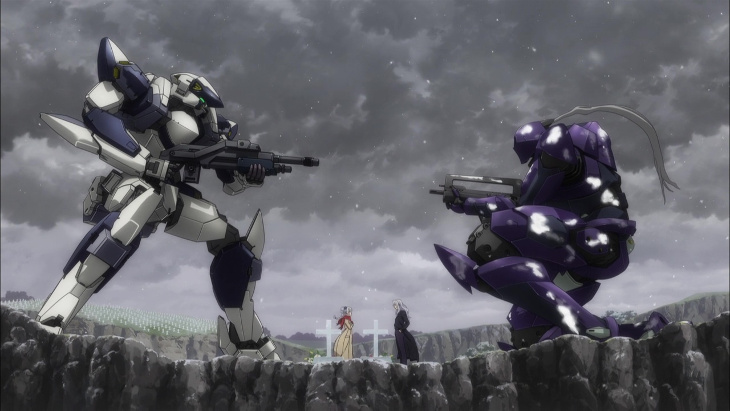
I am so excited for this. For me, Full Metal Panic! is one of my favorite anime/manga franchises ever. It was one of the first series I remember getting addicted to when I was first getting into anime in the early 2000’s. I even remember the first time I picked up a DVD of the series or actually watched the first episode. That being said, after the conclusion of the previous series entry in the franchise, The Second Raid, I was fairly certain that the anime would never conclude the original story. For THIRTEEN YEARS, there was basically no hope of a continuation/conclusion to the series… until now! One of my favorite series is back. Read on to hear me gush.
Before that though, I think that it is worth mentioning that the biggest problem with the new series is that it is completely inaccessible to new viewers. Ignoring the fact that it has been thirteen years since the last series entry, just the first episode alone is full of character moments, plot points, allusions, and discussions that are specific references to The Second Raid. To make matters worse, there is a character who has not shown up at all in the anime series except in the non-plot comedy season: Full Metal Panic: Fumoffu! This character has a fair amount of screen time and showcases a relationship with both of our lead characters that is going to feel like it came completely out of left field for anyone who chose to skip the comedic side story season Fumoffu (considering Kora is one of those people, I think it is a fair warning). Suffice to say, even for those familiar with the series, this might still leave you feeling uninitiated. As such, I personally feel it is necessary to do a little bit of series background work here just to get everyone up to speed.
Full Metal Panic takes place in an alternate timeline where the Cold War did not end in 1991. There are a number of possible reasons for this, but the most likely cause is the huge technological advancements that took place in weapons manufacturing. In particular, the creation of Arm Slaves (or AS); giant robots piloted by human soldiers with weaponry and abilities far beyond traditional weaponry. Arm slaves and a number of other huge leaps in weapons technology are a result of something called Black Technology, a mysterious unknown collection of theorems, blue prints, and other seemingly impossible feats of science that became available to certain groups in the 1980s. Black Technology can only be obtained and understand by special human beings called The Whispered, named for all claiming to hear a voice whispering these specs and blueprints to them in their minds. Because the Black Technology is so dangerous and valuable, terrorist groups and hostile countries will do just about anything to obtain The Whispered. In response, a special mercenary army called Mithril is created to find and protect The Whispered as well to use their technological advantages to destroy those who would use them for evil.
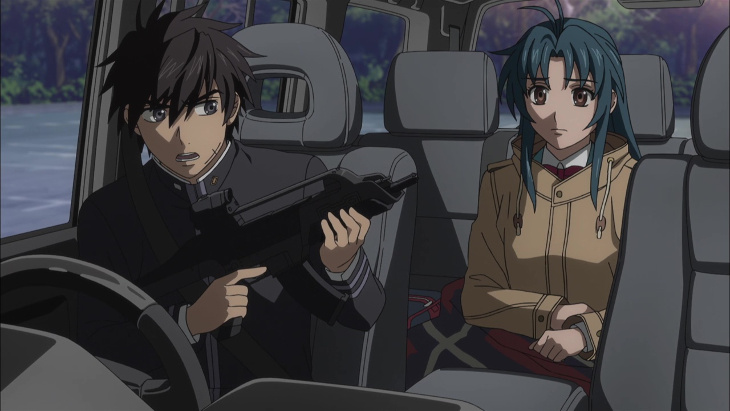
Enter Sousuke Sagara, a 16-year-old Japanese child soldier raised as a guerilla fighter in the Middle East. He is now an agent of Mithril and has been assigned to work undercover at a Japanese high school to protect one of the students there by posing as one himself. Unfortunately, Sousuke’s unique upbringing and mission have left him spectacularly unqualified to act “normal” in a public high school setting, and thus his target, Kaname Chidori, is constantly irritated by his bumbling attempts to protect her from things like tripping teachers or perverted male students. Kaname, despite unknowingly being one of The Whispered, has lived a mostly normal life as a high school student and thus has trouble believing Sousuke’s claims that her life is in constant danger. Hilarity ensues. However, the laughs do not last long as enemies with their own advanced Arm Slaves and other weapons technology soon come to kidnap her, and Kaname and Sousuke must figure out how to work together and balance their disparate lives in order to stay alive.
That description should tell you one of the big things that will make or break this series for you. Full Metal Panic is equal parts slice-of-life school comedy as it its taught science fiction military thriller. This combination does not always gel well, and the first season suffered from trying to balance them. The subsequent seasons, Fumoffu and The Second Raid, mostly tended to focus on one element or the other and got greater success because of that. Invisible Victory seems to definitely be pointing towards more serious content, and it also shows no signs of stopping to give the audience a breather. The first episode has so much plot and character development in it that the episode does not even bother with an opening or ending sequence. The show wastes no time introducing that the heads of the good and evil organizations are brother and sister, that there are a large number of human sized Arm Slaves being sent to kill Sousuke and kidnap Chidori, that a minor character from the school seemingly knew the whole time that Sousuke was an undercover agent or that the enemy organization, called Amalgam, has the ability to orchestrate a worldwide communications blackout when they start their attack to wipe out Mithril. If that sentence sounds breathless and too chock full of content to you, then try watching the episode.
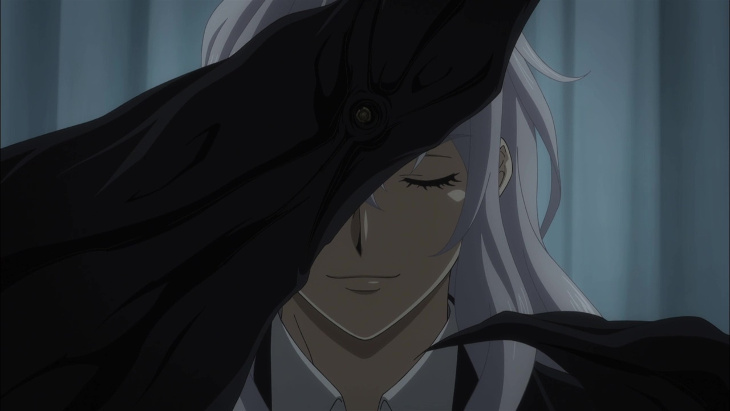
All of this is fine as long as one thing is kept consistently good: the giant robot fights. The Arm Slave fights tend to be some of the most iconic moments of the series, and the final Arm Slave fight at the end of The Second Raid is still one of my favorite giant robot fights ever. Unfortunately, some things have changed since the days of The Second Raid. For one thing, it seems that all of the big robots are going to be completely CGI. Granted, the CGI in this looks better than in stuff like Golden Kamuy, but after several seasons of awesomely drawn and animated mecha fights, switching to CGI to portray them is going to be a little jarring. Xebec Studio is a studio with a long history, and they do have some experience with robot animation (Martian Successor Nadesico, Heroic Age, ZOIDS, etc) but aside from Nadesico they have done little that is noteworthy in the genre. I also see a lot of mediocre garbage like Busou Renkin, Pilot Candidate, or Ladies Vs Butlers credited to them. Considering this is the successor to The Second Raid, which was animated by the now legendary Kyoto Animation, that does not fill me with much confidence. The animation aside from the robots so far looks perfectly fine, but I will withhold judgement until I see some robot fights.
Luckily, the characters are still what always sell me about this series, and Invisible Victory has managed to maintain that. Kaname is still a charming, funny, likable girl with a hair trigger temper and difficulty processing how she feels about her gloomy mercenary schoolmate. Sousuke is still adorably dense and likably serious about everything he does and utterly incapable of emotional deception. Considering how he started out, the scene of him and Kaname quietly walking home holding hands made me feel all warm and fuzzy inside. Sadly, considering how the climax of Invisible Victory will likely play out, those feelings will be gone for quite a while.

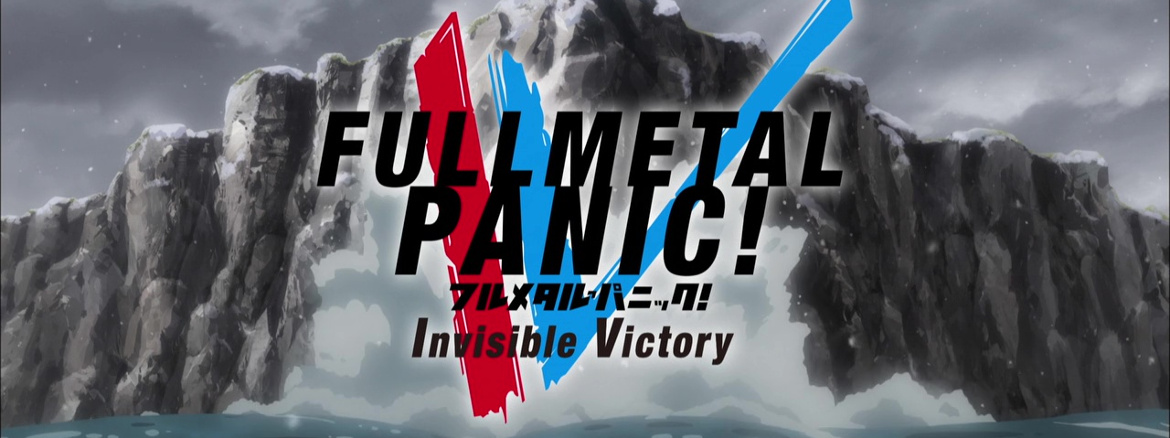
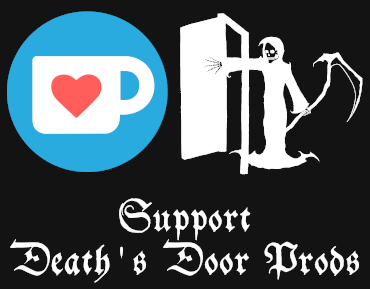

Add comment